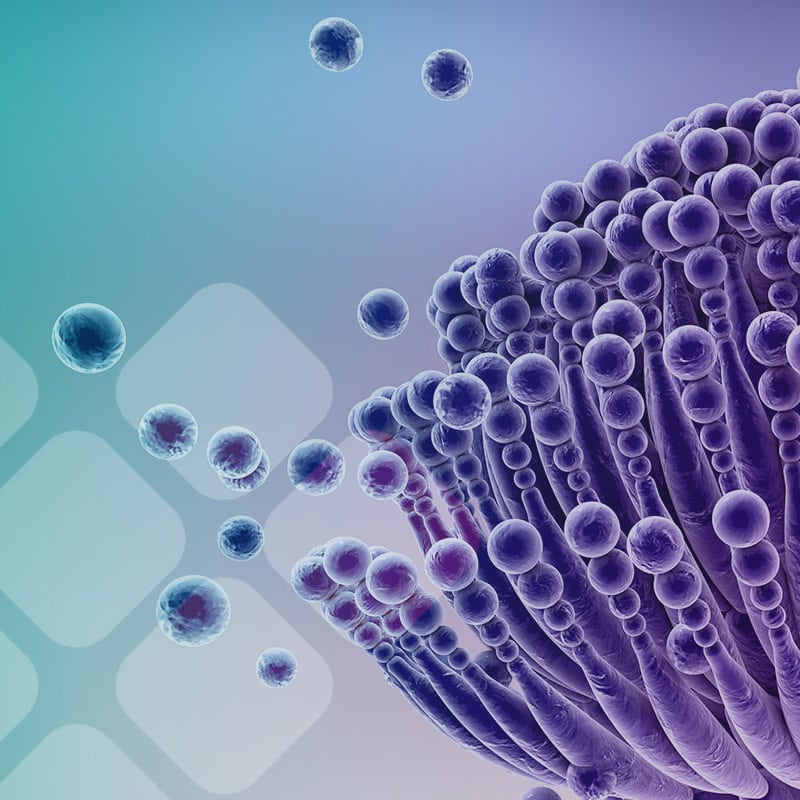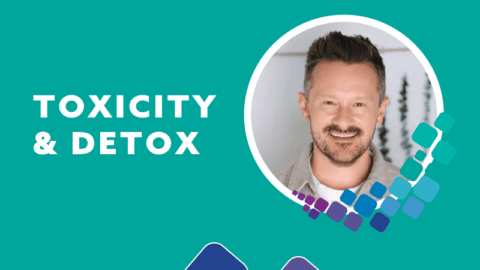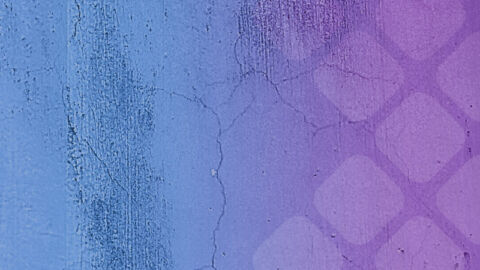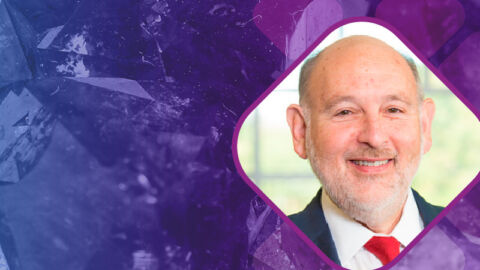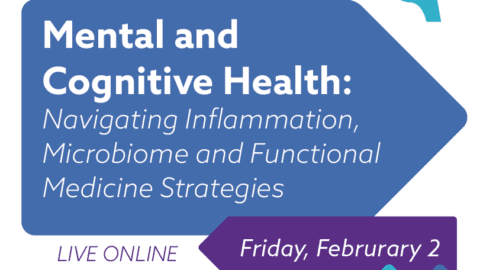Mosaic EDGE (formerly GPL Academy) has been educating practitioners for over 15 years on how to help patients heal through cutting-edge testing, research and protocols. In our recent 2-Day OAT+TOX Workshop, speakers focused on the epidemic of environmental toxin exposure, from the many chemicals we encounter every day to mycotoxins released from mold. Attendees learned about many common environmental pollutants from the 173 chemicals tested by the GPL-TOX Profile.
The following Q+A is a grouping of responses from William Shaw, PhD, who participated in the OAT+TOX Workshop with his own unique topics and lectures as labeled.
The material contained within this article is not intended to replace the services and/or medical advice of a licensed healthcare practitioner, nor is it meant to encourage diagnosis and treatment of disease. It is for educational purposes only. Any application of suggestions set forth in the following portions of this article is at the reader’s discretion and sole risk. Implementation or experimentation with any supplements, herbs, dietary changes, medications, and/or lifestyle changes, etc., is done so at your sole risk and responsibility.
Q: How long should someone be on a binder?
A: Binders should be utilized for the duration of the mold exposure and treatment.
Q: Only antifungal treatments for removing mold from lungs and nasal passages? I have heard/seen that nebulized GSH and nasal irrigation with specific sprays gets rid of it. Evan Brand discusses alternatives to antifungals as he got rid of his severe mold infection without using them.
A: These can be utilized. It is not guaranteed that these therapies alone will be enough in each case. Antifungals should be considered in each case where needed.
Q: Can you speak to products like XClear vs nasal Glutathione for sinus colonization? Also, oral Amphotericin, …is it more/less/equal in efficacy to oral nystatin for GI mold/yeast? (I know IV it can be really harsh).
A: Both Xlear and nasal Glutathione can work to clear nasal colonization. They also can work well together. Amphotericin can work well for GI mold. It is more beneficial than Nystatin when nasal/respiratory colonization is involved as Nystatin doesn’t get absorbed by the GI tract.
Q: Why would a patient have a Mycophenolic Acid in the high abnormal range (302.17) if he is not taking an immunosuppressant drug and does not have an autoimmune disease? He does think he has a penicillin allergy and hasn’t had penicillin since childhood. How is the high Mycophenolic Acid treated in such a case?
A: Mycophenolic acid will be in the high range if there is a current exposure to penicillium mold in foods and/or a water damage building. Also if there is a high colonization and that mold is producing large amounts of the toxin you can see elevated levels. Typically, if someone is on the immunosuppressant prescription you would see this value closer to the >10,000 range.
Q: What has been used in place of Cholestyramine if the patients are unable to tolerate it?
A: You can try Welchol or charcoal. These have similar binding affinities.
Q: What is the dosage of Cholestyramine for children?
A: The research dose is 240mg/kg/day in 2-3 divided doses. It usually evens out to 8g total per day. LINK
In most cases this is a lot for a child to handle. You can always divide this dose in half to 2g one to two time a day.
Q: Can you discuss how you dose binders like charcoal & clay?
A: These binders should be dosed according to the client’s bowel movements. Most products recommend 2 caps for about 500mg give or take. If someone has normal bowel movements this should be a suitable dose for them. If constipation is an issue, then only use 1 capsule a day and be sure that they are having a regular movement every day they take the binder. If diarrhea is an issue, consider using 2 capsules 2 times a day to slow gastric movement and allow for nutrients to have increased time in the GI tract for enhanced absorption. Be sure they are giving away meals/meds/supplementation. 2 hours on each end is usually suitable. 4-6 hours is ideal to ensure no interaction. Some find it best to give before bed 2 hours after dinner or first thing in the morning and waiting a couple hours to eat breakfast.
Q: So to clarify, you don’t recommend any type of provocation before a urine mycotoxin test? I understood that a completely negative test just meant that there was no provocation.
A: Correct there is no need to provoke our MycoTOX profile. A completely negative test usually means the mycotoxins the person was exposed to were not tested by our assay.
Q: Would a person who has a penicillin allergy by infected be penicillium?
A: A penicillin allergy differs from an overgrowth of Penicillium mold. There is a specific protein from the mold organism that penicillin is made from. This is specific to a penicillin allergy. This differs from a mold exposure. An exposure won’t necessarily make you allergic to penicillin.
REGISTER NOW FOR OUR UPCOMING EVENTS AND WORKSHOPS.
Non-Metal Toxic Chemicals and Their Effects on Health: Glyphosate and Beyond
Q: Do you know if general anesthetic gases show up in any of the compounds measured on the TOXDetect Profile? Wondering if anesthesia providers measure higher in any of these?
A: If it is administered intravenously, phthalates may be present (Marker number 3.). This chemical is also present in some pharmaceuticals, depending on the compound used.
Q: At what temperature should the sauna be for best treatment? What if patient is unable to tolerate high temps but can tolerate 130 degrees?
A: The main function of utilizing sauna in detoxification is to increase internal body temperature to help liberate toxins from adipose tissue and increase perspiration for a route of elimination. Whatever temperature that happens for the patient should be utilized. It may need to be started slow and progress as tolerated.
Q: Do you include in the testing kits urine bags for infants? Can infants be tested with the EnviroTOX Complete Panel with one sample too?
A: Infants can be tested, and to ensure you receive the urine bags, request them at the time you order the test kit.
Q: Do you recommend traditional or infrared sauna?
A: When the original research was being conducted on this method as a part of detoxification, the original saunas were utilized. Infrared is now the preferred, but traditional will still work.
Q: Sauna at what temp for one hour?
A: What ever the patient can handle that will induce perspiration.
Q: Is an infrared suana effective in detoxing bromopropane?
A: Yes, along with Glutathione or NAC.
Q: How long should a patient stay in sauna a day?
A: That is dependent on the patient, and what they can tolerate.
Q: Can you repeat the recommendation for IR sauna? How many times per week? For how long?
A: 1 hour, daily, for 6 weeks
Q: Where do you find glyphosate on the GPL-TOX report?
A: It is not on the TOXDetect Profile®, it is a separate test
Q: The 40-year-old male with high glyphosate and HVA/VMA ratio was also on a dopamine/norepinephrine reuptake inhibitor. How do you interpret the OAT given this circumstance?
A: Pharmaceuticals acting in the synaptic cleft are not likely to influence urinary metabolites more than daily variability.
Q: Are there significant amounts of glyphosate in marijuana? I have several patients using cannabis who presented with dysbiosis.
A: Depending on the source there could be trace levels of it, but not likely sprayed on the plant or flower itself, as it would kill the plant (or a weed in some agricultural communities).
Q: what do you think of Ion Cleanse foot bath detox?
A: Clinicians and patients have reported some benefits from it, but beyond anecdotal evidence, the very limited research does not favor it.
Q: I have an infrared sauna in my home office and have my cancer patients use it. What is the fear of cross-contamination from chemo drugs being excreted in sweat passing to others? We use towels and burn off with 10 minutes of 150-degree heat in between people. hoping that is
A: That will vary greatly depending on the chemo agent used. In general, chemotherapy drugs take 48-72 hours to leave the system, and some can be excreted through sweat. Caution is advised for using sauna treatments with patients actively on chemo agents.
IgG Food Allergy Testing: Scientific Evidence of its Validity in Chronic Illness
Q: I’ve tested a patient with no history of food allergies. Nothing showed so we did IgE since she has high eosinophil/histamine response. Again, nothing showed. All patients -4 -people I’ve tested showed zero allergens. This has not given me confidence in the testing. Thoughts?
A: There are a multitude of variables that could explain this, so I would recommend taking one or two of these tests, and discussing it with one of our consultants.
Q: How long do should gluten be reintroduced prior to doing the Food IgG test?
A: This depends on the individual’s response, but generally around a week prior to testing should suffice.
A: Do you have a recommendation to detox from gluten after exposure?
Q: You can add enzymes to help break it down quicker, or a binder to help adsorb it in the gut if an accidental exposure occurred.
Q: IgG4 is used to detect autoimmune pancreatitis. Why do you say it’s not involved in inflammation?
A: IgG1-3 do not exchange heavy and light chains with other antibodies to form specific antibodies, allowing them to create inflammation. Once these immunoglobin antibodies bind to food antigens, they form larger immune complexes, and increase the inflammation. IgG4 antibodies to food antigens show the presence of antibodies to food, and therefore an immune response, but they will not usually cause inflammation.
Q: Is there a difference between testing dried blood vs whole blood?
A: Mainly in the ease of obtainment of sample. Comparisons of both have been found to be equally valid. LINK
